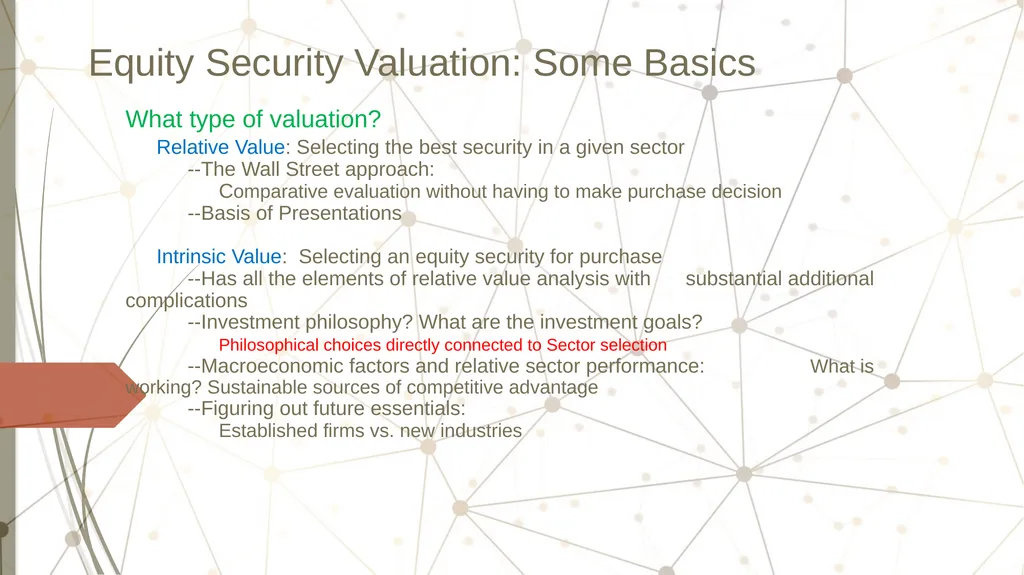
What type of valuation? Relative Value: Selecting
Author: tawny-fly | Published: 2025-06-27
Description: What type of valuation? Relative Value: Selecting the best security in a given sector --The Wall Street approach: Comparative evaluation without having to make purchase decision --Basis of Presentations Intrinsic Value: Selecting an equity
Download Presentation
Download the PPT/PDF: Download
Transcript:
Loading transcript…